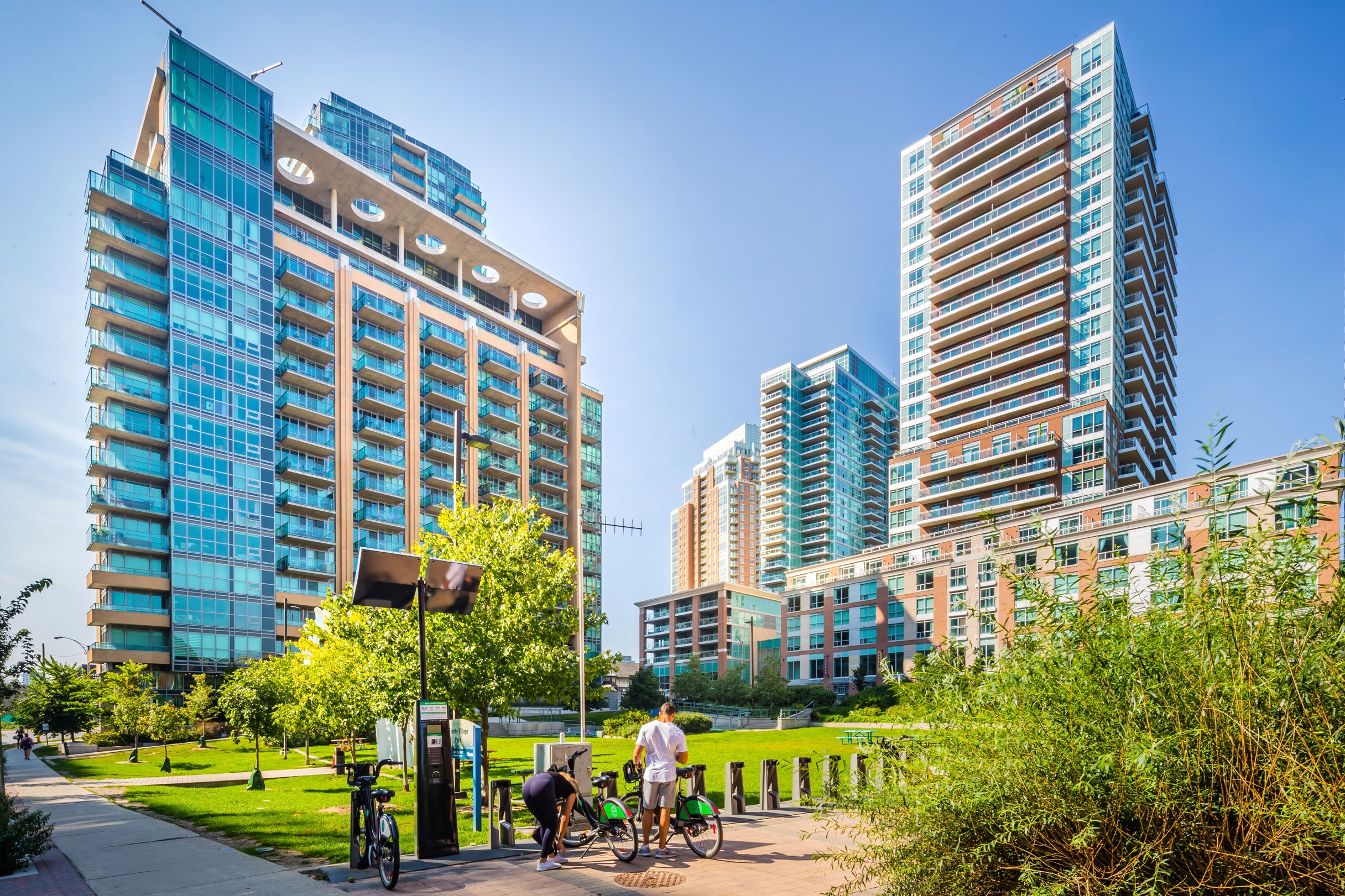
As one of Toronto’s most iconic streets is about to see a major transformation with the launch of the King St. Pilot project, construction has already begun on getting it set up.
Overhead sign installation, new transit shelters at select stops, curbside sign installation, pavement marking, signal activation, and the installation of concrete barriers, planters, tactile strips, and ramps are all on the dock-up for the next two weeks.
The King Street transit pilot project is set to kick off Sunday, November 12, 2017 at 7 am. As crews work to meet this deadline, it’s been interesting to see how the street continues to take on its new identity.
The project is set to limit the amount of vehicles on King Street in the hopes of creating a more transit-friendly culture, increasing efficiency on a route that sorely needs it. Among the new rules being implemented are forced turns at busy intersections and bike boxes to allow cyclists to share the road. The pilot is set to stretch from Jarvis Street to Bathurst, defined as a ‘transit priority zone’ according to City documents.
Whether you consider yourself primarily a driver, pedestrian, cyclist, or transit rider, all are advised to check out the route ahead of the start day to ensure that there is nothing unexpected the first time you come up to the pilot project. For specific information on the changes implemented, visit the King Street Pilot website page here. They will be able to provide a detailed map with instruction for each type of user.
As the King St pilot project is launched, there will continued and comprehensive monitoring in place to judge a select number of key indicators. The results of this ongoing monitoring are set to be available via the City of Toronto website throughout the term of the project.
The King Street Pilot has long been in discussions and no doubt marks an exciting time for the street which has not seen a change this radical in some time. With dedicated street car lanes, the biggest benefit is without question going to be to transit users. Wait times will be shortened, the King streetcar is likely to be less crowded, and it is likely to be overall a more reliable service.
Any opposition has largely come from drivers who argue the pilot project to be a waste of resources. The argument here is that TTC transit is being slowed on King Street due to congestion. The remedy to the congestion, according to some drivers, is not to push it off to side streets and residential zones.
For the time being, it may be a bit of a headache for some drivers coming down King Street as they adapt to the new rules in accordance with the pilot project. Though it remains to be seen what impact the project will have on driving on King Street, the data that will be culled together in the weeks to come is expected to tell that story.
It does bear noting that though cars will be working with less space, parking will be completely removed which could potentially help with vehicle flow. There are also designated areas for deliveries, pick-ups, and drop-offs, as figured into the city plan.
Cyclists will not face the same restrictions as vehicles and will be allowed to drive straight through intersections designated as ‘right turn only’. The installed bike boxes are intended to be used by any cyclists seeking to make left turns off of King Street. Though it can take some getting used to, cyclists are advised to wait in the boxes in front of cars at a red light and then, as the light turns green, to make their turn accordingly.
Pedestrians will be challenged to adapt throughout the King St. pilot project as well. At some intersections, pedestrians will be required to wait for their signal prior to crossing the street and at times, vehicles will be signaled in priority.
Beginning November 12th, the King St. pilot project is going to be a big change for anyone travelling across King between Jarvis and Bathurst. The best advice anyone can give is to keep patient with the changes for yourself and others. Ultimately, the success or failure of the project is going to be dependent on how these changes impact the efficiency and experience of transit, drivers, cyclists, pedestrians, taxis, passenger pick-up and drop-off, and business deliveries.




I’m interested in commercial stores which will be located on street level.